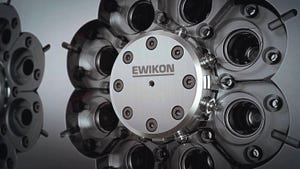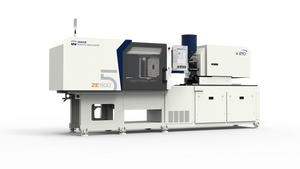April 30, 2003
As processors come out of the recession, many will look for new application opportunities and the equipment they will need.
One area with good potential for extrusion processors is PET inline compounding, especially bottle grades. "About 90% of used PET bottles are recycled for the fiber industry," says Klaus Turnwald, service manager at compounding equipment builder Leistritz Extrusionstechnik, Nürnberg, Germany. "But that sector will not be able to absorb the growing quantities."
Using recycled PET, inline compounding with corotating twin-screw extruders and the requisite additives produces high-quality material without predrying. Significant savings can be achieved by eliminating dryer energy costs and drying time, says Hendrik Wohlfahrt-Laymann, sales manager for direct extrusion at Coperion Werner & Pfleiderer, Stuttgart, Germany (and Ramsey, NJ).
To avoid polymer damage via viscosity reduction during extrusion, PET, which is hygroscopic, has to be predried, says Turnwald. An alternative to predrying is adding stabilizers or degassing to eliminate thermal, thermo-oxidative, and hydrolytic degradation (the latter occurs 10,000 times faster than thermal degradation when processing PET).
Vacuum venting at about 5 millibar or using vacuum with nitrogen superimposition to degass and eliminate moisture along the extruder barrel results in less intrinsic-viscosity degradation than atmospheric venting, translating into improved end-product properties. High screw speed leads to shorter residence time for the PET below the vacuum zone that can cause an increase in hydrolytic degradation, says Mark Redmann, technical manager at degassing equipment maker K. Busch, Maulburg, Germany. The earlier degassing begins, the less thermal stress results.
Berstorff, Hannover, Germany, and Florence, KY, which claims it has delivered more direct extrusion lines for PET than competitors, says corotating twin-screw extruders show a distinct advantage over single-screw extruders in all areas except initial investment. Corotating twin screws provide better homogenization of undried PET, can eliminate expensive masterbatches in favor of less-costly powdered additives, and have more processing flexibility, says Ralf J. Dahl, Berstorff vp.
In a recent direct extrusion project for an Italian PET thermoforming customer producing a 3-layer a/b/a sheet, Berstorff delivered an Ultra Torque ZE90A x 34D UT extruder to process PET recyclate in chips, flakes, or diced material. This unit was paired with a single-screw extruder that applied the two virgin-material outer layers. Dahl says a melt pump to ensure constant throughput is generally used for direct extrusion of PET sheet, but can be eliminated when compounding granulates.
Wohlfahrt-Laymann says one of Coperior Werner Pfleiderer's customers claims a vented twin-screw machine produced a better-iv end-product than using a single-screw extruder and predrying. The processor was also able to make a color change from dark to transparent in only 1 h. "He said he wouldn't even consider such a change on his single-screw equipment because he would spend 24 hours cleaning it," says Wohlfahrt-Laymann. "Previously, his operation had [single-screw extruders] dedicated to specific colors."
"In 10 years, I don't see any thermoformer predrying PET," predicts Wohlfahrt-Laymann. Dahl also expects the technology will be the leading edge in PET granulate and sheet processing within 10 years.
You May Also Like


